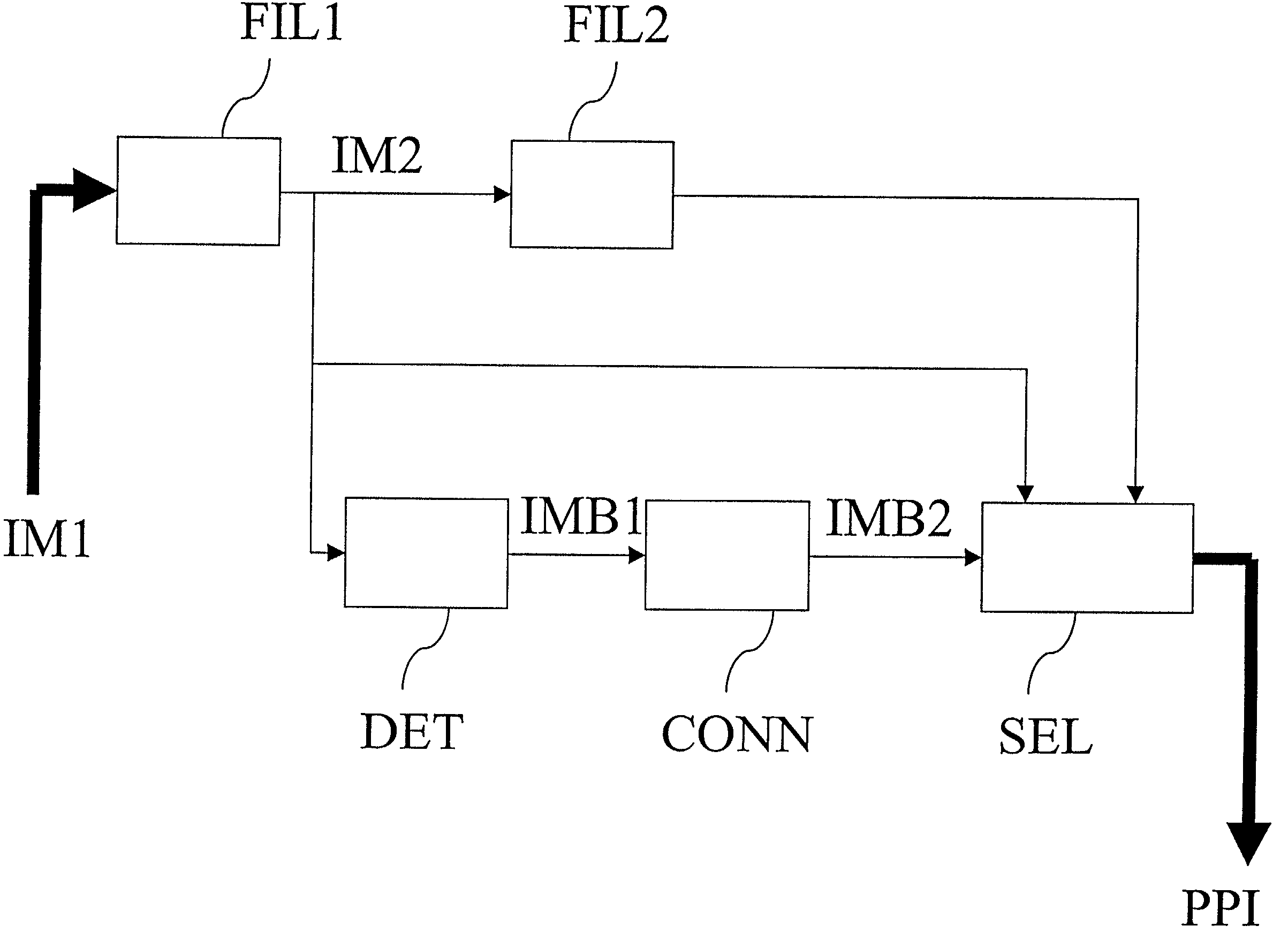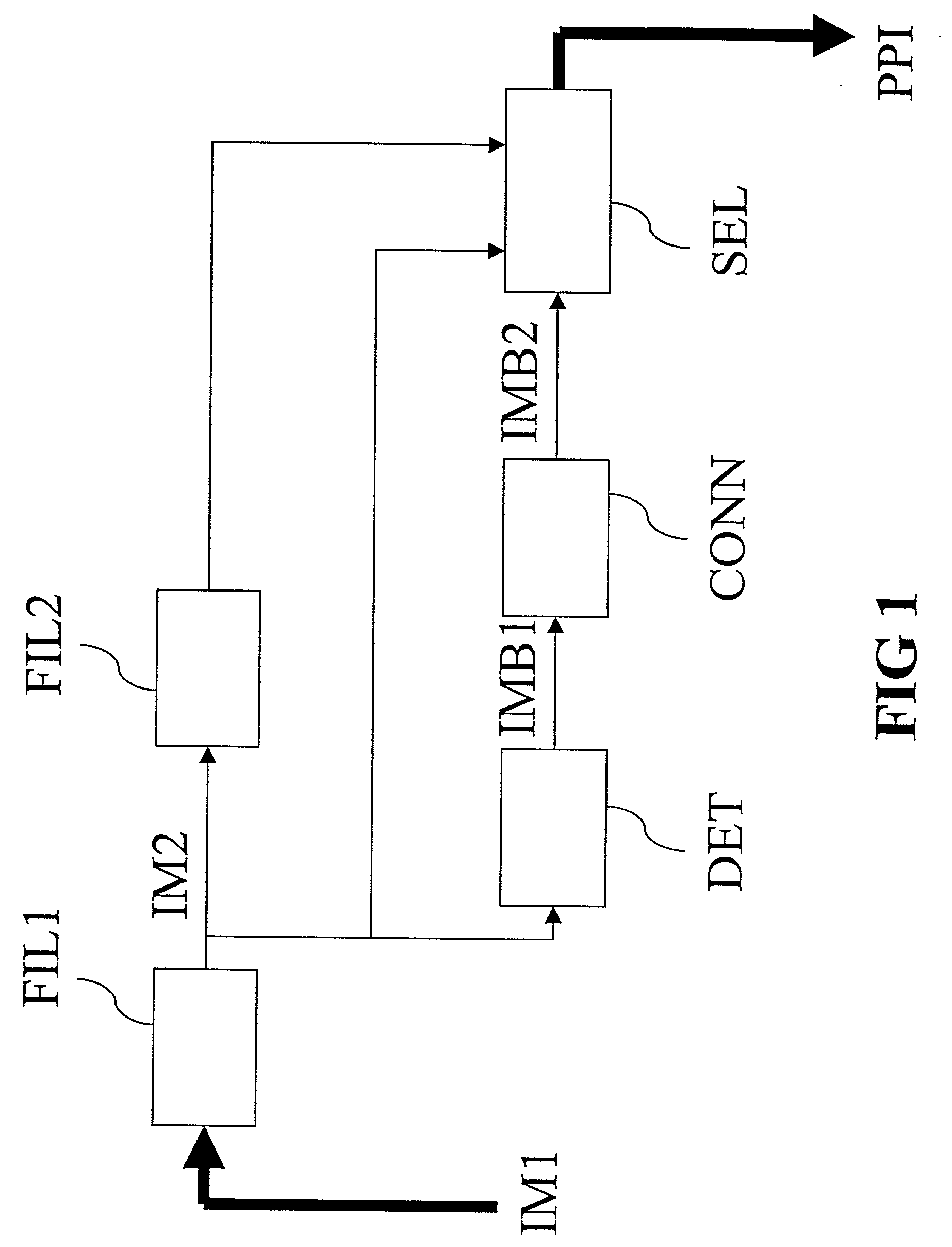Noise reduction method
a technology of noise reduction and noise reduction, applied in the field of noise reduction, can solve the problems of increasing the necessary memory, degrading the quality of the image, and troublesome image comprehension and processing,
- Summary
- Abstract
- Description
- Claims
- Application Information
AI Technical Summary
Benefits of technology
Problems solved by technology
Method used
Image
Examples
Embodiment Construction
[0023] FIG. 1 illustrates characteristic features of the invention as described hereinbefore. A system for treating images comprises a first filtering device [FIL1], a second filtering device [FIL2], a device [DET] for detecting edges and textures, a device [CONN] for forming a connectivity test, and a selection device [SEL].
[0024] A first image sequence [IM1] is applied to the input of the first filtering device [FIL1]. The role of this first filtering device [FIL1] is to eliminate all the pixels in the first image sequence [IM1] that appear in the form of noise, particularly pixels beset with pulse noise. The first filtering device [FIL1] is a device used for eliminating a part of this noise while conserving the edges and the textures. A second image sequence [IM2] is obtained at the output of this first filtering device [FIL1]. The second image sequence [IM2] is applied to the input of the device [DET] for detecting edges and textures. This device [DET] for detecting edges and te...
PUM
 Login to View More
Login to View More Abstract
Description
Claims
Application Information
 Login to View More
Login to View More - R&D
- Intellectual Property
- Life Sciences
- Materials
- Tech Scout
- Unparalleled Data Quality
- Higher Quality Content
- 60% Fewer Hallucinations
Browse by: Latest US Patents, China's latest patents, Technical Efficacy Thesaurus, Application Domain, Technology Topic, Popular Technical Reports.
© 2025 PatSnap. All rights reserved.Legal|Privacy policy|Modern Slavery Act Transparency Statement|Sitemap|About US| Contact US: help@patsnap.com



